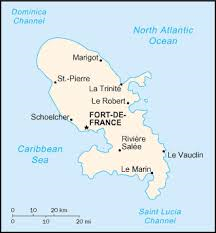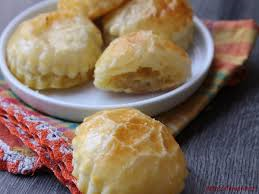Creole Pate: A Martinique Delicacy

Martinique is a small, gorgeous island in the Caribbean proudly home to three distinct cultures: French, Creole, and West Indian.
There are numerous dishes that equally represent each culture better than most, such as Colombo or Boudin.

However, Creole Pate focuses on Creole and French traditions. Hence the name. The dish reminds me heavily of a well-known dessert in America – donuts. It has the slight appearance of a donut hole, but the surprise of a jelly donut. However, the design of it goes more interesting that my interpretation.
Cultural Perspective:
Creole Pate is a pastry dish mostly used for end of the celebrations and pays homage to the islands French and Creole heritage. Its the Turkey to or Thanksgiving, or the Fireworks to our 4th of July.
The dessert gets its inspiration from both the shape of the breaded Jamaican Patty, and the texture of flaky pastries seen in France.
I’m sure we’ve all seen or tasted a Jamaican patty at least once. If not, they are breaded dishes typically filled with pork or meat. French pastries are typically filled with jellies or frosting, and have they texture of Pillsbury biscuits. Creole Pate takes both characteristics to create a flaky goodness that isn’t limited to fillings of beef or pork but can also be filled with various types of jelly.
Socio-economic and political perspectives:
Martinique is a beautiful Caribbean island that has its share of concerns. Creole Pate doesn’t overtly express any issues in the way its prepared, but as I researched, one issue I find problematic are the use of pesticides on their crops. A specific concern is their chlordecone-contaminated soil that is still in the process of being cleansed. Chlordecone was the reason Martinique experienced an increase in breast cancer due to its carcinogen nature.
One way Martinique sought to combat this issue was to cement “(over the countryside with roads, parking lots, hotels and shopping centres) which renders tourism in paradise to become an extension of the colonial plantation system” (Wong). To combat the negative attention drawn to the island sue to the pesticide, the decided to increase tourist attraction in order to place Martinique in a brighter light. As a result their ethical approach is ignored.
Although the problem isn’t entirely fixed, their approach does carry some weight. I’m still looking forward to all Martinique has to offer and especially their Creole Pate.
If you would like to make Creole Pate, here is a recipe (there are others online but mostly in French):
Recipe for Creole pâté
Ingredients for Creole pâté: 8 cups of flour, 3 eggs, 3 egg whites, 1 sachet of yeast, 1 sachet of vanilla sugar, 1 cup of lard, 1 portion carry of pork, 1/2 cup of sugar, liqueur ( Marie-Brizard or anisette)
Creole pâté step-by-step
- Mix 8 cups of flor, 3 eggs, 3 egg whites, 1 sachet of yeast, 1 sachet of vanilla sugar, 1 cup of lard, 1/2 cup of sugar and a small amount of liqueur.
- Flavor and color the pastry with some oil from the cari pork
Mix well - Spread out half the pastry on a baking tray
Place the scraps of cari meat on top
Cover with the remaining half of the pastry
Decorate with any leftover pastry and baste with an egg yolk.
Resources:
Wong, Alfred. (2015) Caribbean Island Tourism: Pathway to Continued Colonial Servitude. Études caribéennes. DOI: 10.4000/etudescaribeennes.7524
Wong, Alfred. Ribero, Christine. (2014) Alternative Agricultural Cropping Options for Chlordecone-Polluted Martinique. Études caribéennes. DOI: 10.4000/etudescaribeennes.6710
Famoh. Le pâté créole des fêtes. Recette and Land. 2017. Web. 4 December 2018. http://recette.land/recette/pate-creole-au-crabe-706655
Creole Pate: Typical of Reunion Island (11 June 2009). Web. 4 December 2018. Retrieved from https://en.reunion.fr/legal-notices